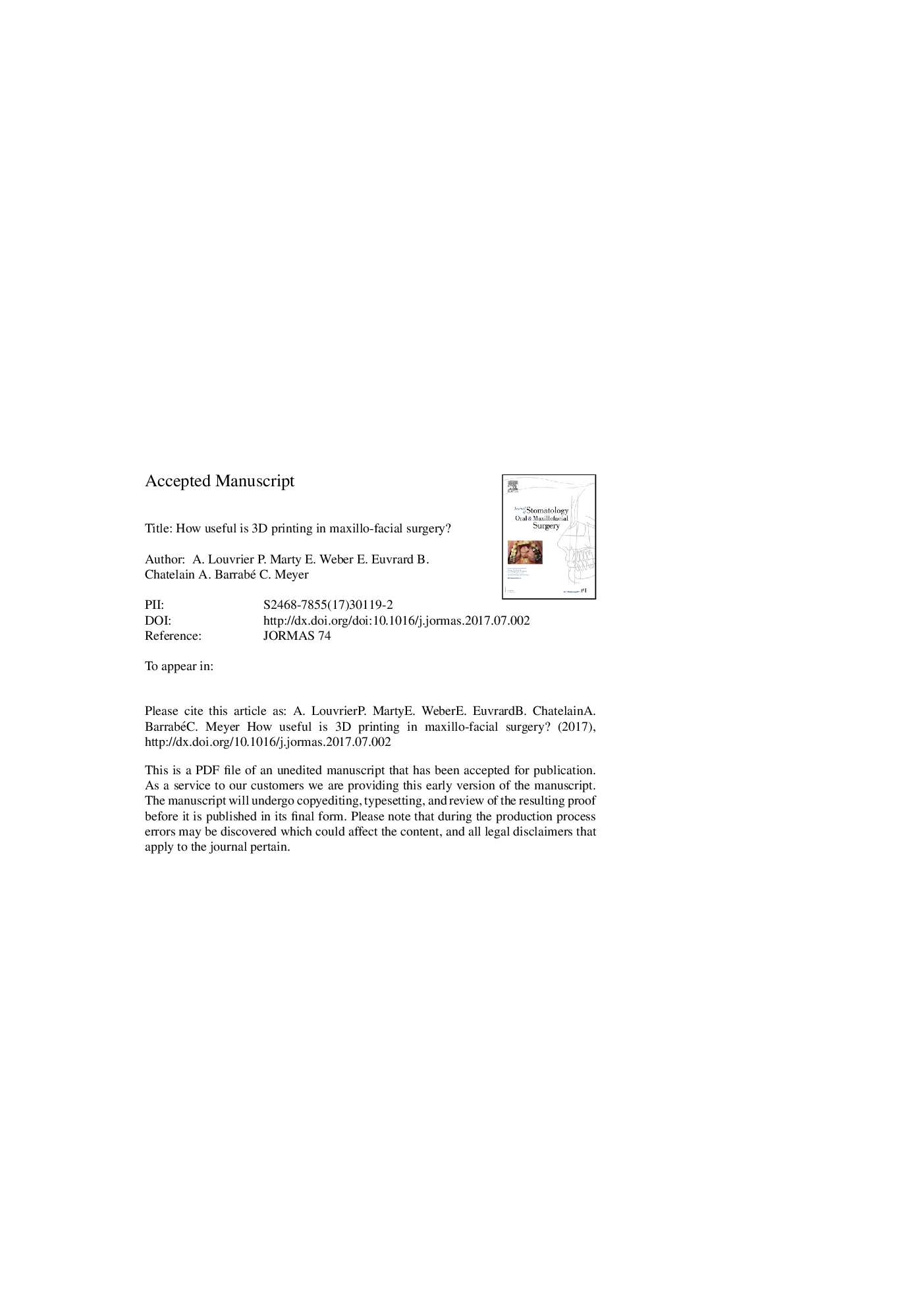| Article ID | Journal | Published Year | Pages | File Type |
|---|---|---|---|---|
| 8924923 | Journal of Stomatology, Oral and Maxillofacial Surgery | 2017 | 19 Pages |
Abstract
The arrival on the market of low-cost printers has increased the use of 3D printing in MFS. Anatomic models are not considered to be MDs and do not have to follow any regulation. Nowadays, they are easily printed with low-cost printers. They allow for better preoperative planning and training for the procedures and for pre-shaping of plates. Occlusal splints and surgical guides are intended for the smooth transfer of planning to the operating room. They are considered to be MDs and even if they are easy to print, they have to follow the regulations applying to MDs. Patient specific implants (custom-made plates and skeletal reconstruction modules) are much more demanding objects and their manufacturing remains nowadays in the hands of the industry. The main limitation of in-hospital 3D printing is the restrictive regulations applying to MDs. The main limitations of professional 3D printing are the cost and the lead time. 3D printed objects are nowadays easily available in MFS. However, they will never replace a surgeon's skill and should only be considered as useful tools.
Related Topics
Health Sciences
Medicine and Dentistry
Dentistry, Oral Surgery and Medicine
Authors
A. Louvrier, P. Marty, A. Barrabé, E. Euvrard, B. Chatelain, E. Weber, C. Meyer,
